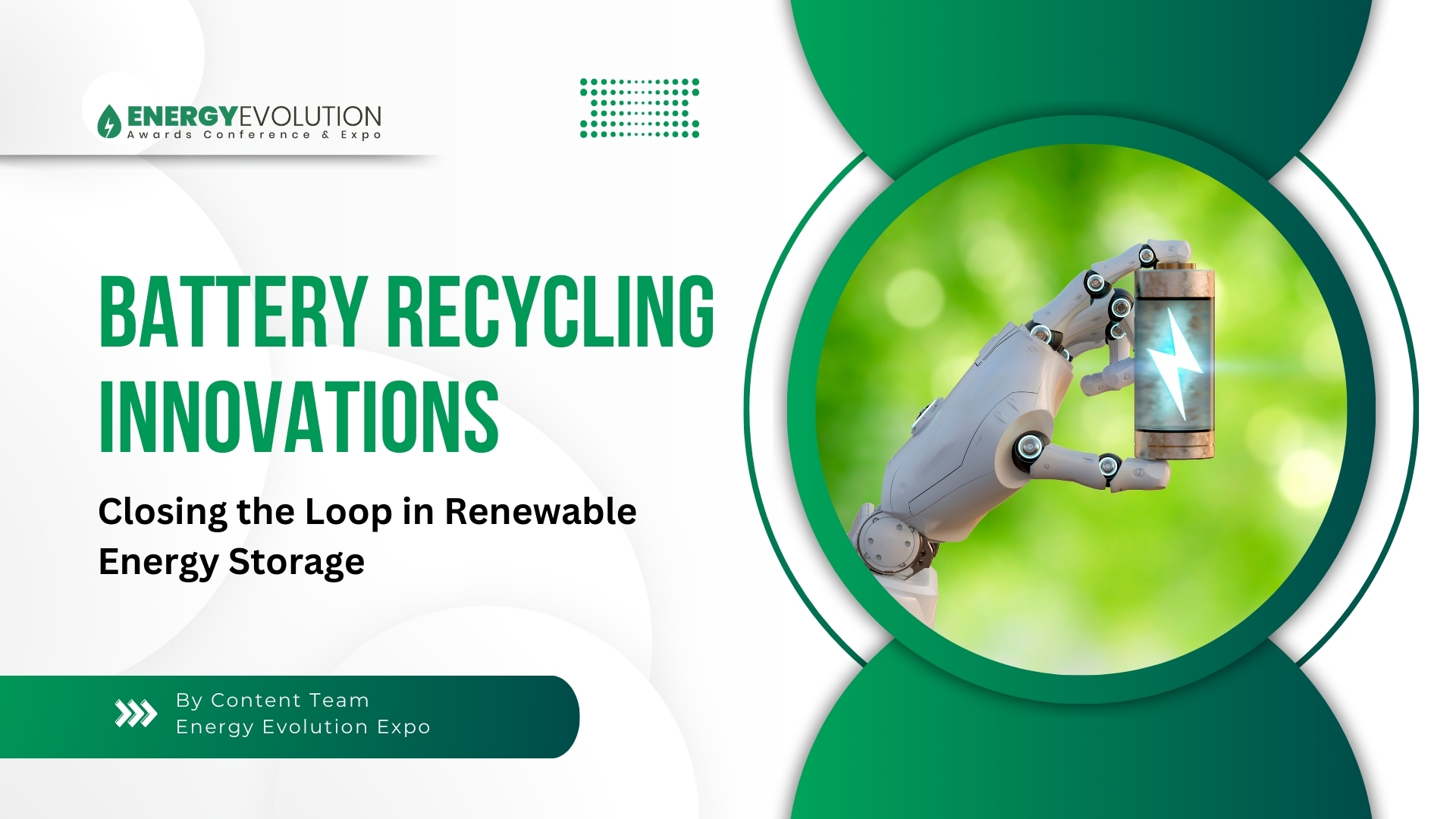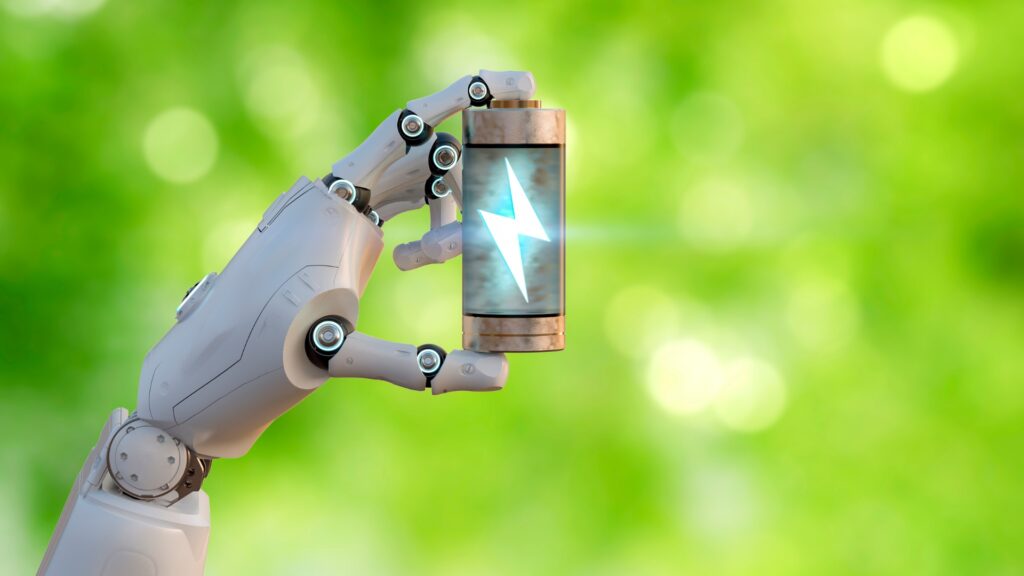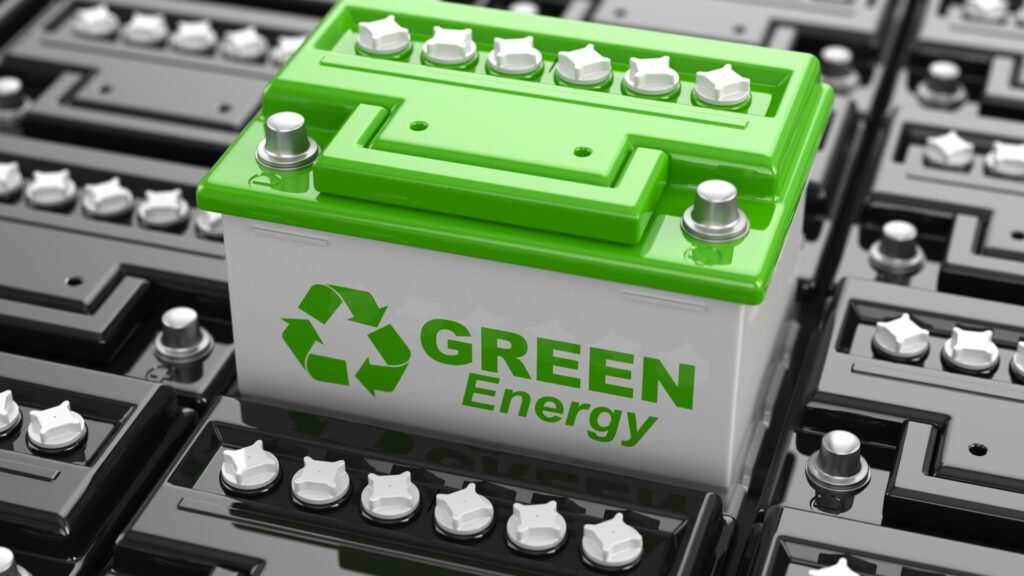Battery Recycling Innovations: Closing the Loop in Renewable Energy Storage

As the world increasingly turns to renewable energy sources, the demand for efficient energy storage solutions has never been higher. Batteries play a critical role in this transition, especially with the rise of electric vehicles (EVs) and renewable energy systems like solar and wind. However, the environmental impact of battery production and disposal raises significant concerns.
To address these challenges, battery recycling innovations are emerging as vital components of sustainable energy strategies. This blog explores the latest advancements in battery recycling, the importance of closing the loop in renewable energy storage, and highlights real-life companies leading the charge in this field.
The Need for Battery Recycling

Batteries, particularly lithium-ion batteries, are integral to energy storage systems. They store energy generated from renewable sources for later use, ensuring a consistent power supply. However, the lifecycle of these batteries presents challenges:
1. Resource Scarcity: The demand for lithium, cobalt, and nickel—the primary components of many batteries—has skyrocketed, leading to concerns about resource depletion and geopolitical supply chain risks.
2. Environmental Impact: Improper disposal of batteries can lead to toxic leaks and hazardous waste, posing risks to ecosystems and human health.
3. Waste Management: With projections estimating millions of tons of used batteries will reach end-of-life in the coming years, effective recycling strategies are crucial to mitigate waste.
Innovations in Battery Recycling

Innovations in battery recycling are focused on developing efficient processes to recover valuable materials and reduce the environmental footprint. Here are some notable advancements:
1. Hydrometallurgical Processes: Companies like American Battery Technology Company (ABTC) are pioneering hydrometallurgical techniques, which use aqueous solutions to extract metals from used batteries. This method is more environmentally friendly than traditional pyrometallurgical processes, which rely on high temperatures and can produce harmful emissions.
2. Direct Recycling Techniques: Redwood Materials, founded by former Tesla CTO JB Straubel, is working on direct recycling processes that recover battery materials without breaking them down into their base elements. This method can preserve the integrity of battery components, enhancing the efficiency of material recovery and potentially reducing the energy required for processing.
3. Battery Second Life Applications: Companies like Nexterra and Motive are exploring second-life applications for EV batteries. Instead of recycling batteries immediately after their automotive life, these companies repurpose used batteries for energy storage in renewable energy systems or grid stabilization, extending their useful life and reducing waste.
4. Automated Recycling Systems: Li-Cycle, a Canadian startup, has developed an innovative recycling system that automates the process of shredding and separating battery materials. Their facilities utilize a “spoke-and-hub” model, where batteries are processed in local facilities (spokes) and then sent to a central hub for further refinement, maximizing material recovery.
Companies Leading the Way
1. American Battery Technology Company (ABTC): ABTC is at the forefront of sustainable battery recycling. Their patented processes focus on recovering lithium, cobalt, nickel, and other critical materials from end-of-life batteries and manufacturing scrap. The company aims to establish a circular economy around battery materials, reducing the need for virgin resource extraction.
2. Redwood Materials: This Nevada-based company has made significant strides in battery recycling, claiming to recover over 95% of the materials from spent batteries. Redwood Materials collaborates with manufacturers like Panasonic and Tesla to integrate recycled materials back into the supply chain, significantly reducing the carbon footprint associated with new battery production.
3. Li-Cycle: With facilities in North America and Europe, Li-Cycle aims to create a closed-loop system for lithium-ion batteries. Their innovative recycling process is designed to recover over 95% of the materials used in batteries. In 2021, the company announced a partnership with **General Motors* to recycle EV batteries, further cementing its position in the market.
4. Umicore: This Belgian company specializes in materials technology and recycling. Umicore operates battery recycling facilities that recover valuable metals like lithium, cobalt, and nickel, which are then supplied back to the battery production industry. Their commitment to sustainability includes developing processes that minimize environmental impact.
5. Circle Lithium: An emerging player in battery recycling, Circle Lithium focuses on developing a closed-loop lithium battery lifecycle. By partnering with battery manufacturers and automakers, they aim to create a comprehensive recycling system that significantly reduces the demand for new lithium extraction.
Challenges and Future Directions
While the advancements in battery recycling are promising, several challenges remain:
– Economic Viability: The recycling process must be economically competitive with virgin material extraction. As battery technologies evolve, the market must ensure that recycling remains financially sustainable.
– Regulatory Frameworks: Establishing clear regulations for battery recycling can help standardize processes and improve safety. Governments worldwide are beginning to implement extended producer responsibility (EPR) policies to hold manufacturers accountable for their products’ end-of-life.
– Public Awareness and Education: Educating consumers about proper battery disposal and recycling options is crucial for increasing recycling rates. Awareness campaigns can help facilitate the transition to more sustainable practices.
As the demand for renewable energy and electric vehicles continues to grow, innovations in battery recycling are essential for creating a sustainable energy future. By closing the loop on battery materials, we can reduce environmental impact, conserve valuable resources, and foster a circular economy. Companies like American Battery Technology Company, Redwood Materials, Li-Cycle, Umicore, and Circle Lithium are leading the way in this critical effort, demonstrating that a sustainable approach to battery management is not only possible but necessary for a greener planet.
The future of energy storage hinges on these innovations, and by embracing recycling, we can ensure a more sustainable tomorrow. We need to keep up with all recent innovations to reap maximum benefits and to facilitate a better understanding of the latest developments and trends in the Renewable energy Industry, various Conferences and Expos, which bring Industry leaders together, serve as an all-inclusive platform.
The Energy Evolution Awards, Conference, and Expo organized by Next Business Media is making its debut in Spain in 2025. It will be a leading forum dedicated to honoring excellence in Energy Technology, showcasing innovations, and fostering collaborations. The events unite industry leaders, and visionaries to explore the latest advancements, tackle key challenges, and shape the future of Energy.
The Energy Evolution Awards, Conference, and Expo will celebrate outstanding achievements, promote sustainable practices, and drive the Energy Industry forward into a technologically advanced sustainable era. Energy Evolution Awards, Conference, and Expo will be a platform for cultivating innovation and shaping a brighter, more efficient energy landscape.






